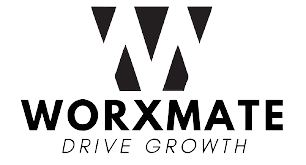Summary:
Leadership goals are clearly defined objectives aimed at improving your skills as a leader. These goals should be specific, measurable, achievable, relevant, and time-bound (SMART) to effectively track progress and drive meaningful growth. Whether you’re an aspiring manager or seasoned executive, setting intentional leadership goals is essential for personal development and organizational success.
In today’s rapidly evolving workplace, leadership goals have become essential tools for personal and organizational growth. Whether you’re a seasoned executive or an emerging team leader, setting clear and purposeful leadership goals can transform your effectiveness and drive measurable results.
With changing workplace dynamics and increasing demands for human-centered leadership, strategic goal-setting has never been more critical.
This comprehensive guide explores what leadership goals are, why they matter, and provides actionable examples to help you elevate your leadership journey in 2025 and beyond.
What Are Leadership Goals?
Leadership goals are clearly defined objectives to improve your skills as a leader. These goals can be long-term or short-term, but they must be specific and measurable so you can track your growth and progress along the way.
When setting personal leadership goals, you can use the SMART goal criteria: objectives should be specific, measurable, achievable, relevant and time-bound.
For example, you may want to work on improving your confidence. However, setting that as a general ongoing goal makes it impossible to track or measure.
Instead, you could aim to enroll and complete a public-speaking class within the next six months. That objective is specific, measurable, achievable, relevant to improving confidence and time-bound to happen within six months.
Leadership goals serve as personal and professional development roadmaps, guiding leaders through intentional growth while providing clear metrics to measure success.
They bridge the gap between current capabilities and desired leadership competencies, creating structured paths for advancement.
Why Are Leadership Goals Important?
Setting purposeful leadership goals delivers numerous benefits that extend beyond personal development:
- Enhanced Self-Awareness: The process of identifying leadership goals requires honest self-assessment, helping leaders recognize their strengths and areas for improvement.
- Accelerated Professional Development: Clear goals create focus and direction, accelerating skill acquisition and expertise development in critical leadership competencies.
- Improved Team Performance: Leaders with defined goals are better equipped to guide their teams effectively, resulting in improved collaboration and outcomes.
- Greater Accountability: Concrete goals create measurable benchmarks that hold leaders accountable for their development and impact.
- Increased Adaptability: According to Velocity Global, adaptability ranks among the most crucial leadership qualities in today’s changing workplace.
Research from Gartner indicates that organizations with leaders who set and achieve meaningful development goals experience 37 percentage point increases in employee engagement and 30 percentage point increases in employee well-being.
Read More: OKR for Leadership Development: A Framework for Growth
15 Leadership Goals Examples for Success
Based on research from leading organizations and leadership experts, here are 15 powerful leadership goals Examples that can transform your effectiveness:
Personal Development Leadership Goals
1. Become More Adaptable to Change
The rapidly evolving workplace demands leaders who can pivot quickly and model adaptability for their teams. According to Velocity Global, this quality is essential for navigating today’s dynamic business environment.
SMART goal example: “Implement at least three major workplace flexibility initiatives based on employee feedback within the next six months.”
2. Develop Active Listening Skills
Despite leaders spending approximately 63% of their day engaged in listening activities, they may comprehend only 25% of what they hear. Active listening transforms how leaders process information and connect with team members.
SMART goal example: “Schedule weekly one-on-one meetings with each direct report for the next quarter, practicing active listening techniques.”
3. Enhance Emotional Intelligence
Emotional intelligence enables leaders to recognize and manage their emotions while effectively responding to others’ needs and concerns.
SMART goal example: “Complete a comprehensive emotional intelligence assessment and develop an improvement plan with three specific actions within 60 days.”
Team-Focused Leadership Goals
4. Build a Feedback-Rich Culture
Continuous improvement requires honest, constructive feedback flowing in all directions.
SMART goal example: “Establish and implement a quarterly 360-degree feedback system within the next 90 days and achieve 90% participation from team members.”
5. Develop Future Leaders
Great leaders create other leaders, ensuring organizational sustainability.
SMART goal example: “Identify three high-potential team members and create personalized development plans for each within 60 days, with monthly check-ins throughout the year.”
6. Improve Team Communication
Clear communication prevents misunderstandings and aligns everyone around common objectives.
SMART goal example: “Reduce communication-related project delays by 50% within six months by implementing a new team communication protocol.”
Strategic Leadership Goals
7. Align Team Goals with Organizational Objectives
Strategic alignment ensures everyone moves in the same direction.
SMART goal example: “Conduct quarterly team alignment sessions to ensure 100% of individual and team goals directly support organizational priorities.”
8. Drive Innovation
Leaders must create environments where innovation thrives.
SMART goal example: “Implement a structured innovation process within 90 days that generates at least five viable new ideas each quarter.”
9. Enhance Data-Driven Decision Making
In today’s information-rich environment, leaders must leverage data effectively.
SMART goal example: “Increase data utilization in decision-making by implementing dashboard reporting for all key performance indicators within 60 days.”
10. Strengthen Decision-Making Capabilities
According to Gartner, making high-stakes decisions through deliberate reflection is a critical leadership competency.
SMART goal example: “Implement a structured decision-making framework for all major team decisions in the next quarter.”
11. Foster Inclusion and Belonging
Diverse teams perform better when everyone feels valued and included.
SMART goal example: “Implement three specific inclusion initiatives this quarter and measure their impact through anonymous team surveys.”
12. Enhance Team Resilience
Teams that can withstand challenges and bounce back from setbacks achieve more consistent results.
SMART goal example: “Develop and implement a team resilience training program within four months.”
13. Cultivate Strategic Thinking
Leaders must see beyond immediate challenges to identify opportunities and potential threats.
SMART goal example: “Dedicate two hours weekly to strategic thinking, resulting in a comprehensive three-year vision document for my department by year-end.”
14. Improve Cross-Functional Collaboration
Breaking down silos improves organizational effectiveness.
SMART goal example: “Establish three cross-functional initiatives in the next six months that measurably improve collaboration between departments.”
15. Build External Partnerships
Strategic external relationships create new opportunities for growth.
SMART goal example: “Identify and establish partnerships with three complementary organizations within the next year.”
How to Write Leadership Goals
Creating effective leadership goals requires thoughtful planning and structure. According to Velocity Global, follow these steps to develop impactful goals:
- Identify strengths and weaknesses. Hone in on areas that actually need improvement, so start by thinking about areas that can be improved and areas that are strengths.
- Select the most important pain points. Identify the most relevant or pressing pain points in the office and make a list of them to get a better handle on the exact things to be targeted with goal-setting.
- Think of tangible ways to meet goals. “I want to improve employee communication” is vague, but “I want to hold bi-weekly employee events to facilitate bonding” is an actionable statement. Brainstorm ways to actually meet and measure goals and improvement.
- Create benchmarks for achieving goals. Long-term goals can feel overwhelming. Break goals into smaller chunks to better track progress and measure success.
- Ask for feedback. The purpose of SMART goal-setting is to improve team dynamics and performance. Ask for feedback from colleagues and direct reports while working on self-improvement.
Case Study: Leadership Goals Drive Transformation at Santander Bank
Santander Bank recognized the need to develop future leaders who could navigate an increasingly complex financial landscape. According to Gartner’s case study, Santander implemented their Young Leaders Development Program to address this challenge.
The program focused on specific leadership goals for participants, including:
- Developing strategic thinking capabilities
- Enhancing cross-functional collaboration skills
- Building adaptability in the face of industry disruption
- Strengthening customer-centric decision making
The program structured these goals using the SMART framework and combined synchronous and asynchronous learning formats to accommodate geographically distributed leaders.
Results were impressive:
- 87% of participants reported applying new leadership skills within 30 days
- The bank saw a 42% increase in internal promotions among program participants
- Employee engagement scores rose by 31% in teams led by program graduates
- The organization experienced improved resilience during market fluctuations
This case study demonstrates how structured leadership goals, when properly implemented and supported, can transform both individual capabilities and organizational outcomes.
Conclusion
Leadership goals provide the structure and direction necessary for continuous growth in today’s complex business environment. By setting specific, measurable objectives aligned with both personal aspirations and organizational needs, leaders can systematically enhance their capabilities and impact.
The examples and framework outlined in this article offer a starting point for your leadership development journey. Remember that the most effective goals reflect your unique context, challenges, and aspirations. Regularly reassess and refine your leadership goals to ensure they remain relevant and challenging.
Worxmate’s OKR software offers the perfect platform to structure, track, and achieve your leadership goals while ensuring alignment with broader organizational objectives. By leveraging this powerful tool, you can transform your leadership journey from sporadic improvement to systematic growth.



